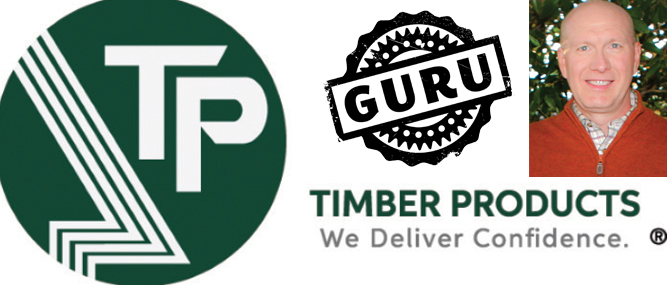International shipping of palletized cargo generally requires compliance with plant health guidelines designed to limit the spread of pests around the globe. And if you follow these guidelines (ISPM-15), you can ensure that any wood pallets, crates or dunnage that you manufacture or use are compliant.
In the United States, the ISPM-15 program is overseen by the American Lumber Standard Committee (ALSC), and monitoring of individual companies is handled by licensed inspection agencies.
ISPM-15 requires solid wood packaging materials (WPM) to be debarked and then heat-treated or fumigated with methyl bromide. Treated WPM is then stamped or branded with a compliance mark.
In order to participate in this program, a company must sign up with and be monitored by an agency accredited by the ALSC. These agencies are required to perform a minimum of 12 unannounced audits per year at businesses that participate in the program — typically one visit per month.
When choosing an accredited agency to monitor your program, make sure to select one that has the professionalism, knowledge, and resources to provide the guidance and support your company will need to ensure that it complies with ISPM-15.
It is important that companies understand how to properly manage the program since it is ultimately their responsibility for ensuring consistent conformance to ISPM-15 regulations. The agency monitoring the program will perform routine audits to verify conformance, and the agency should also be the go-to source for support, direction, and information as needed.
Monitoring by the agencies focuses on two areas. One is administration: the agency inspector reviews and verifies various documents and records to ensure the company’s compliance program is in place and up to date. These documents and records include:
• An accessible quality control process. This includes monthly records showing how many board feet of heat-treated (HT) lumber the company has received.
• Heat-treating kiln chamber charts documenting that time and temperature requirements were met for every charge related to compliance for ISPM-15.
• Monthly records showing how many board feet of material was shipped bearing the company’s IPPC mark.
• Addendums related to special situations on-site.
• All related records for the program must be kept and remain accessible for at least two years.
The agency inspector also will review a number of areas of the company’s operations to ensure compliance with ISPM-15. These include:
• Received HT lumber to verify it is properly marked and segregated from non-HT material.
• IPPC marking equipment (stamps, brands, etc.) to ensure everything is in good condition.
• Probe placement and backing where heat chambers are utilized.
WPM that has been marked in compliance with ISPM-15 will be inspected to ensure it conforms to regulations for:
• Marking – Applicable, legible, placement and color (not red or orange in color).
• Bark limits (less than 1-3/16 inches, or if greater than 1-3/16, less than 50 square centimeters on each contiguous piece of bark).
• Verification of HT material used to produce WPM bearing the ISPM-15 mark.
• Old marks properly obliterated on any repaired WPM.
The agency creates a report to document the findings of the audit, and a copy is provided to the participating company for its records.
It is important that the agency inspector physically sample WPM to verify conformance in the areas mentioned above. Any areas identified as non-conforming are documented on the inspector’s report and must be corrected. Depending on the situation, corrective action may be taken at the time of the audit visit. Wood packaging material also may be quarantined for corrective action later. Non-conforming audits require the participating business to properly modify the appropriate processes and for the agency to increase inspections to ensure these modifications provide future compliance.
If a pallet company mistakenly ships WPM that does not conform to ISPM-15 regulations, the error can create problems for the business, the customer that received the material and used it for export shipments, and the monitoring agency. For example, if it is discovered by officials overseas, the non-conforming WPM and the load of goods it carries can be returned to the United States or quarantined at the discharge port. Fines for non-conforming WPM discovered overseas can be as much as three times the value of the entire contents of the cargo container; although the fines typically would be imposed on the pallet company’s customer, the customer likely would try to recover the expense from their supplier and almost certainly would have second thoughts about doing business with them again. The U.S. Department of Agriculture is notified, and eventually the monitoring agency will investigate to determine the cause and to work with the company involved to ensure it complies with ISPM-15 going forward.
The importance of a properly managed ISPM-15 program cannot be overstated. It offers pallet companies the opportunity to expand their business, and it provides assurance to everyone in the supply chain that wood packaging used in overseas shipments is compliant with international standards.
(Matt McGowan is WPM program manager for Timber Products Inspection Inc. in Conyers, Ga. For more information about Timber Products Inspection and its export certification services, visit www.tpinspection.com. For questions about this article or to contact Matt, call (770) 785-4769 or email mmcgowan@tpinspection.com.)




